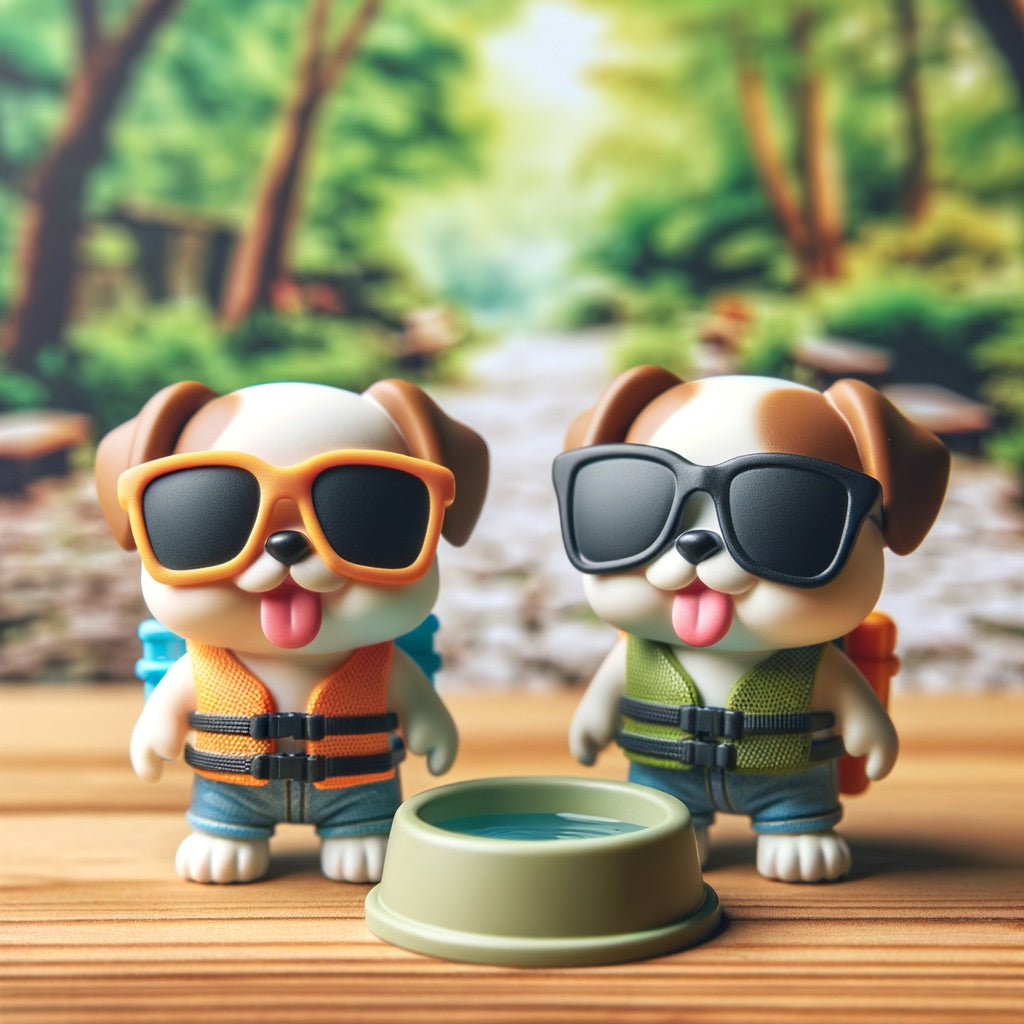
Beat the Heat: The Ultimate Guide to Keeping Your Dog Safe and Cool This Summer
Share
Key Takeaways:
- Timing saves lives: Walk during cooler morning or evening hours to prevent dangerous overheating
- Smart gear matters: Essential cooling equipment can be the difference between a safe walk and an emergency vet visit
- Know the warning signs: Recognizing heat stress symptoms early can prevent life-threatening heatstroke

As temperatures soar, a simple summer walk can turn dangerous for our beloved dogs. Did you know a dog's body temperature can rise rapidly, leading to heatstroke in just minutes? While we're enjoying the sunny weather, our furry friends face serious health risks that many pet owners don't fully understand. But here's the good news: with the right knowledge and preparation, you can ensure your canine companion stays safe, cool, and happy throughout even the hottest summer days.
Why Dogs Are More Vulnerable to Heat Than You Think
Understanding your dog's unique cooling challenges is the first step to protecting them. Unlike humans who sweat across their entire skin surface, dogs primarily cool themselves by panting. This process relies on evaporating moisture from their tongue and respiratory tract, which is significantly less effective than full-body sweating, especially in humid conditions.
Beyond just temperature, high humidity significantly hinders a dog's ability to cool down through panting, making hot, humid days particularly dangerous for your pet.
Dogs at Higher Risk Include:
- Brachycephalic breeds (short-nosed dogs like Bulldogs, Pugs, and French Bulldogs)
- Overweight or obese dogs
- Dogs with thick or dark-colored coats
- Senior dogs or those with underlying heart or respiratory conditions
- Highly active dogs or those engaged in strenuous activities
Knowing your dog's specific risk factors helps you take targeted precautions when the mercury rises.
Perfect Timing: When to Walk Your Dog Safely
The hottest part of the day typically falls between 10 AM and 4 PM, making these hours a no-go zone for outdoor exercise. Instead, schedule walks during cooler early morning or evening hours when the sun's intensity decreases.
Pro Tip: The 5-Second Pavement Test
The "5-second rule" applies to all outdoor surfaces—asphalt, concrete, sand, and artificial turf. Place the back of your hand on the ground for five seconds. If it's too hot for your bare hand, it's too hot for your dog's sensitive paw pads, which can quickly burn and require expensive veterinary treatment.
Essential Summer Walking Gear: Your Dog's Survival Kit
Being prepared can mean the difference between a pleasant walk and an emergency situation. Here's your must-have equipment checklist:
Hydration Essentials:
- Water and Collapsible Bowl: Carry more water than you think you'll need and offer frequent drinks
Cooling Accessories:
- Cooling Towel or Bandana: Soak in water and place around your dog's neck or chest. Re-wet frequently as they lose effectiveness once dry
- Portable Fan: Battery-operated fans provide refreshing breezes, especially when combined with wetting your dog's fur
- Cooling Vest: Ideal for heat-sensitive dogs to help regulate body temperature
Protection Gear:
- Paw Protection: Breathable booties or paw balm protect against hot surfaces. Ensure proper fit to avoid trapping heat
- Umbrella or Pop-up Shade: Provides instant relief when shade isn't available
Remember: over-preparation beats being caught without essential cooling tools when your dog needs them most.

Smart Route Planning: Make Shade Your Best Friend
Your walking route can dramatically impact your pet's safety and comfort. Shaded areas can be 5-11 degrees Celsius cooler than spots in direct sunlight—a potentially life-saving difference.
Route Selection Strategies:
- Scout Ahead: Explore your neighborhood early to identify consistently shaded paths
- Parks and Wooded Areas: Natural shade plus cooler ground surfaces
- Water Features: Routes near safe streams, ponds, or dog-friendly fountains offer opportunities for paw cooling and hydration
- Avoid Heat Traps: Steer clear of asphalt and concrete that retain and radiate heat
- Indoor Alternatives: On extreme heat days, consider climate-controlled options like pet-friendly stores or short air-conditioned car rides
Stay flexible—if your dog shows discomfort, be ready to cut the walk short or find immediate cooling relief.
Pacing for Safety: Why Slow and Steady Saves Lives
High-energy activities in hot weather cause your dog's body temperature to spike rapidly, increasing heatstroke risk. Instead, embrace a leisurely pace that allows natural exploration without dangerous overexertion.
Smart Pacing Guidelines:
- Start Gradually: Begin at a relaxed pace, allowing your dog's body to adjust
- Frequent Shade Breaks: Stop every 10-15 minutes to rest and offer water
- Monitor Behavior: Heavy panting, slowing down, or reluctance signals it's time to head home
- Adjust for Your Dog: Older dogs, puppies, and flat-faced breeds need shorter, slower walks
- Post-Walk Cool-Down: Allow a recovery period at home with fresh water and no strenuous play until breathing normalizes
Recognizing Overheating: Warning Signs That Demand Action
Early recognition can prevent a manageable situation from becoming life-threatening. Here's what to watch for:
Mild to Moderate Heat Stress:
- Excessive panting and increased drooling
- Restlessness or seeking cool surfaces
- Reluctance to continue walking
Severe Heat Stress (Medical Emergency):
- Rapid, noisy breathing
- Bright red or very pale gums (healthy gums are bubblegum pink)
- Confusion, stumbling, or collapse
- Vomiting, diarrhea, or seizures
If you observe any severe signs, consider it a medical emergency. Move your dog to a cool area immediately, offer small amounts of water, and contact your veterinarian without delay.
Emergency Cooling Techniques: What to Do When Overheating Occurs
Quick, proper action can save your dog's life. Here's how to cool an overheated dog safely:
Immediate Steps:
- Move to Shade: Find air-conditioned space or shaded area immediately
- Offer Cool Water: Small amounts of cool (not cold) water for drinking
- Strategic Wetting: Use cool water on areas where blood vessels are close to the surface—belly, paws, inner thighs, armpits, and neck
- Cool Compresses: Apply damp towels to neck, armpits, and groin
- Increase Air Flow: Use fans to boost evaporative cooling
Critical Warning:
Avoid ice or extremely cold water. While counterintuitive, very cold applications can cause blood vessels to constrict, trapping heat in the core and potentially leading to shock.
Your Dog's Summer Safety Starts With You
By prioritizing smart timing, equipping yourself with proper gear, and staying vigilant for distress signals, you can ensure your furry companion enjoys safe, comfortable summer adventures. Your dog's well-being depends on your preparation and awareness—make this summer both fun and safe for your beloved pet.
Ready to keep your dog cool this summer? Start implementing these strategies today, and share your own heat safety discoveries in the comments below!
